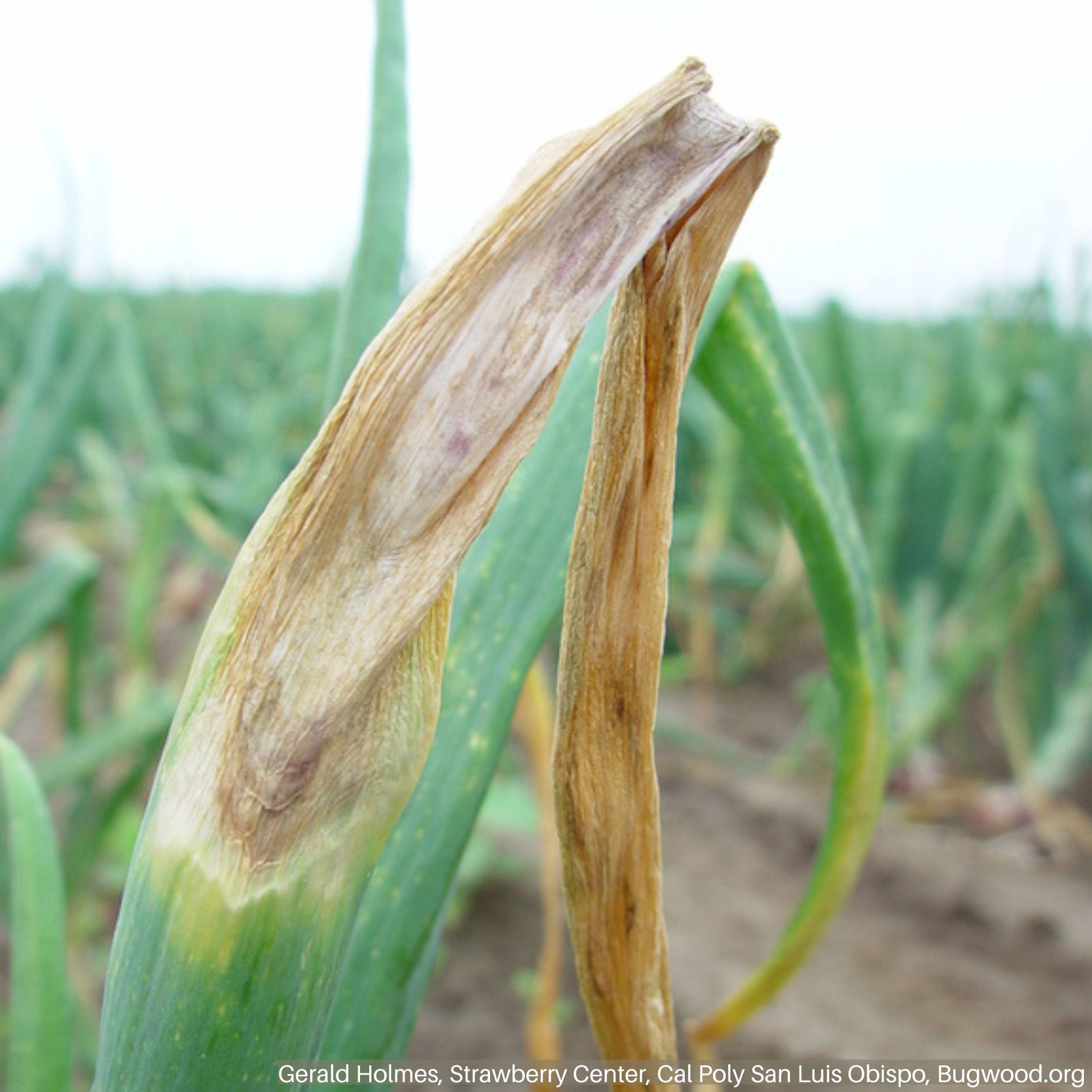Stemphylium Leaf Blight
 Onion infected with stemphylium leaf blight and downy mildew.
Onion infected with stemphylium leaf blight and downy mildew.
 Stemphylium Leaf Blight on Onion
Stemphylium Leaf Blight on Onion
HOSTS
- Garlic
- Onion
- Chives
BIOLOGY
Stemphylium leaf blight is caused by the fungus Stemphylium vesicarium.
- Optimum conditions for spread are 65 to 77°F, heavy dew or rainfall, and conditions that cause foliar wounding.
- The pathogen overwinters on infected plant debris.
- Spores from outside or within the field are windblown and only cause infections through existing wounds on the leaf surface, such as from thrips feeding, hail, windstorms, etc.
SYMPTOMS
This disease is limited to leaves, and does not extend down to the scales of the bulb. Infections are initially small, light yellow to brown spots that may coalesce into extensive blighting of the leaves. Spots turn dark in appearance due to formation of fruiting bodies.
GENERAL MANAGEMENT
This disease is common in Utah onion fields, but rarely causes crop loss.
- Conduct weekly examination of older leaves (which are most susceptible), starting in mid to late spring..
- Rotate out of onion crops for at least three years.
- Bury plant debris.
- Reduced plant density
Fungicides are available to prevent further spread; only apply after correct diagnosis Treatment for purple blotch also controls Stemphylium leaf blight.
Click here for fungicide options for commercial farmers.
Click here for fungicide options for home gardeners.



